Figure shows a fixed wedge on which two blocks of masses and are placed on its smooth inclined surfaces. When the two blocks are released from rest, find the acceleration of centre of mass of the two blocks.
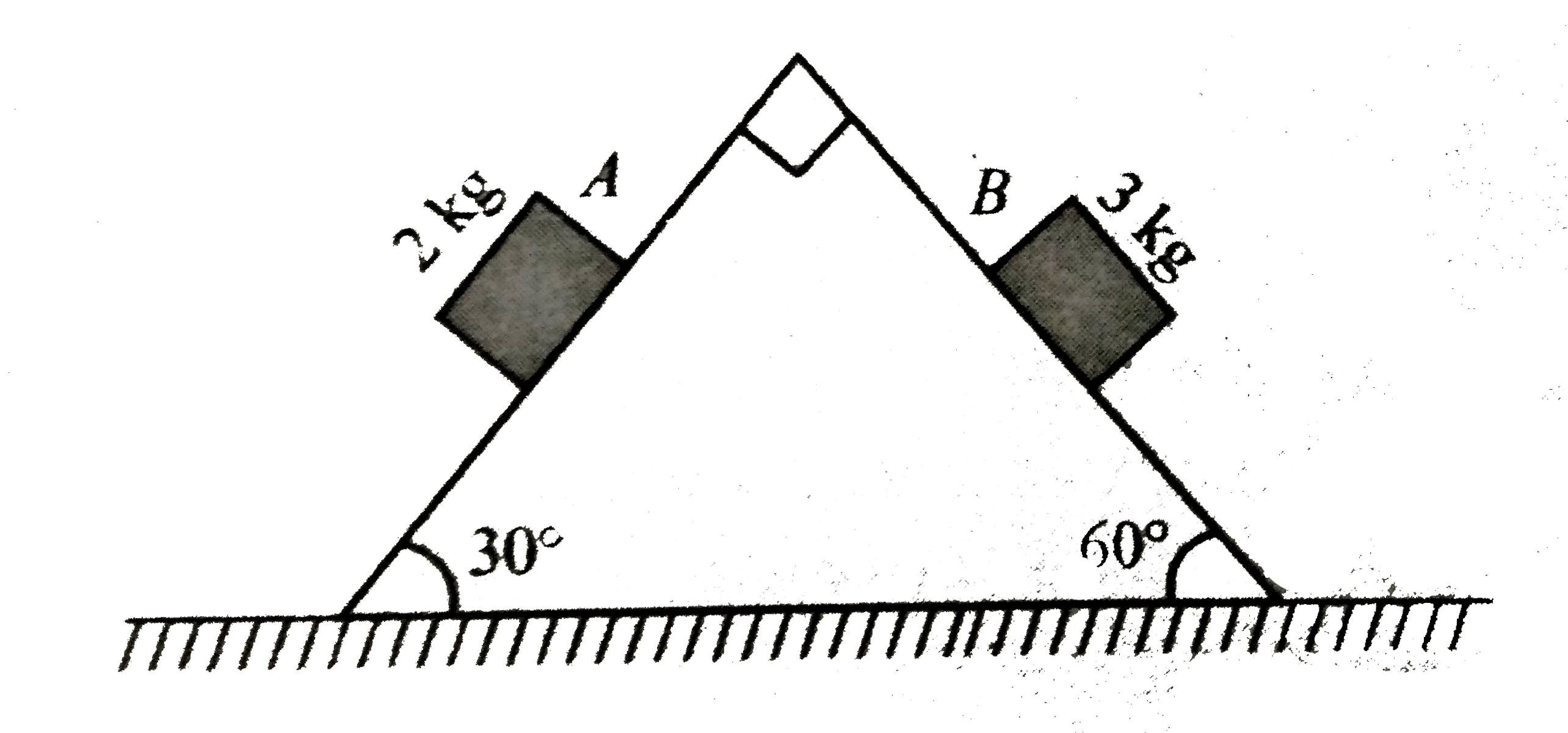
Block slides with aceleration and block slides wth acceleration . Now the acceleration of centre of mass of the system of blocks and can be given both in and in directions as:
and
Thus acceleration of the centre of mass of the system is given as
Topper's Solved these Questions
- CENTRE OF MASSBook:CENGAGE PHYSICSChapter:CENTRE OF MASSExercise:Exercise 1.2
Explore 23 Videos
- CENTRE OF MASSBook:CENGAGE PHYSICSChapter:CENTRE OF MASSExercise:Exercise 1.3
Explore 24 Videos
- CENTRE OF MASSBook:CENGAGE PHYSICSChapter:CENTRE OF MASSExercise:Solved Examples
Explore 13 Videos
- CALORIMETRYBook:CENGAGE PHYSICSChapter:CALORIMETRYExercise:Solved Example
Explore 13 Videos
- DIMENSIONS & MEASUREMENTBook:CENGAGE PHYSICSChapter:DIMENSIONS & MEASUREMENTExercise:Integer
Explore 2 Videos
Similar Questions
Figure-2.54 shows a block of mass m is placed on an inclined wedge of mass M If the system is released from rest find the acceleration of m and M.
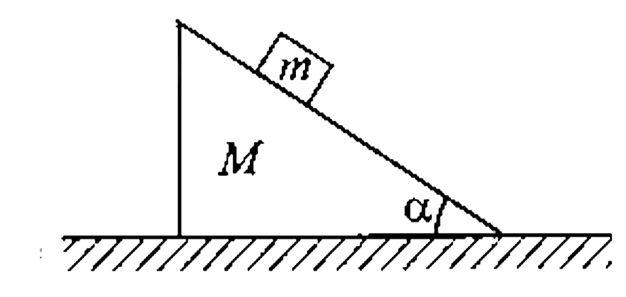
View SolutionTwo blocks A and B each of equal masses m are released from the top of a smooth fixed wedge as shown in the figure. Find the magnitude of the acceleration of the centre of mass of the two blocks.
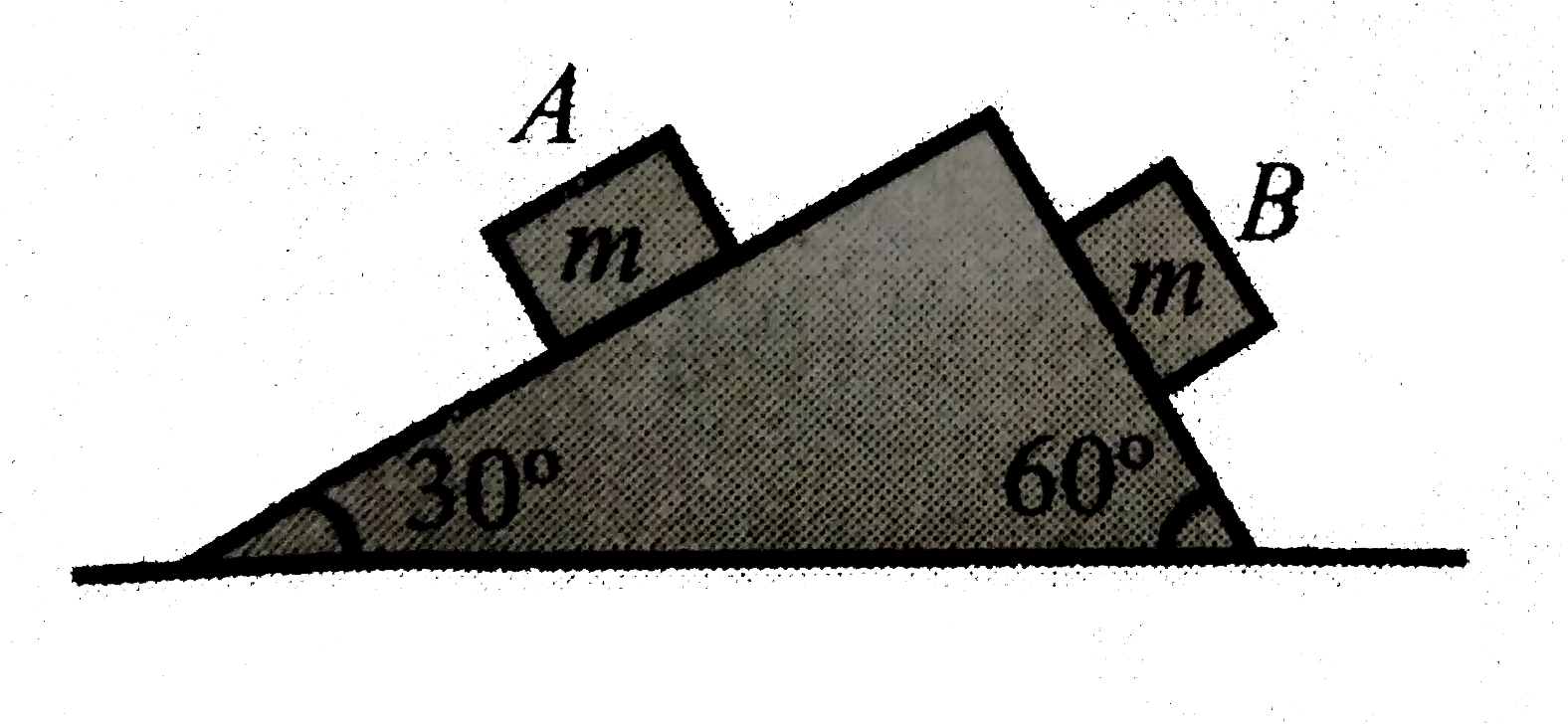
View Solution
Knowledge Check
Two blocks of masses 6kg and 4kg are attached to the two ends of a massless string passing over a smooth fixed pulley. if the system is released, the acceleration of the centre of mass of the system will be
Ag, vertically downwardsBg5, vertically downwardsCg25, vertically downwardsDzeroTwo blocks of masses 1 kg and 2 kg are placed in contact on a smooth horizontal surface as shown in fig. A horizontal force of 6N is applied on a 1-kg block. Find the force of interaction of the blocks.
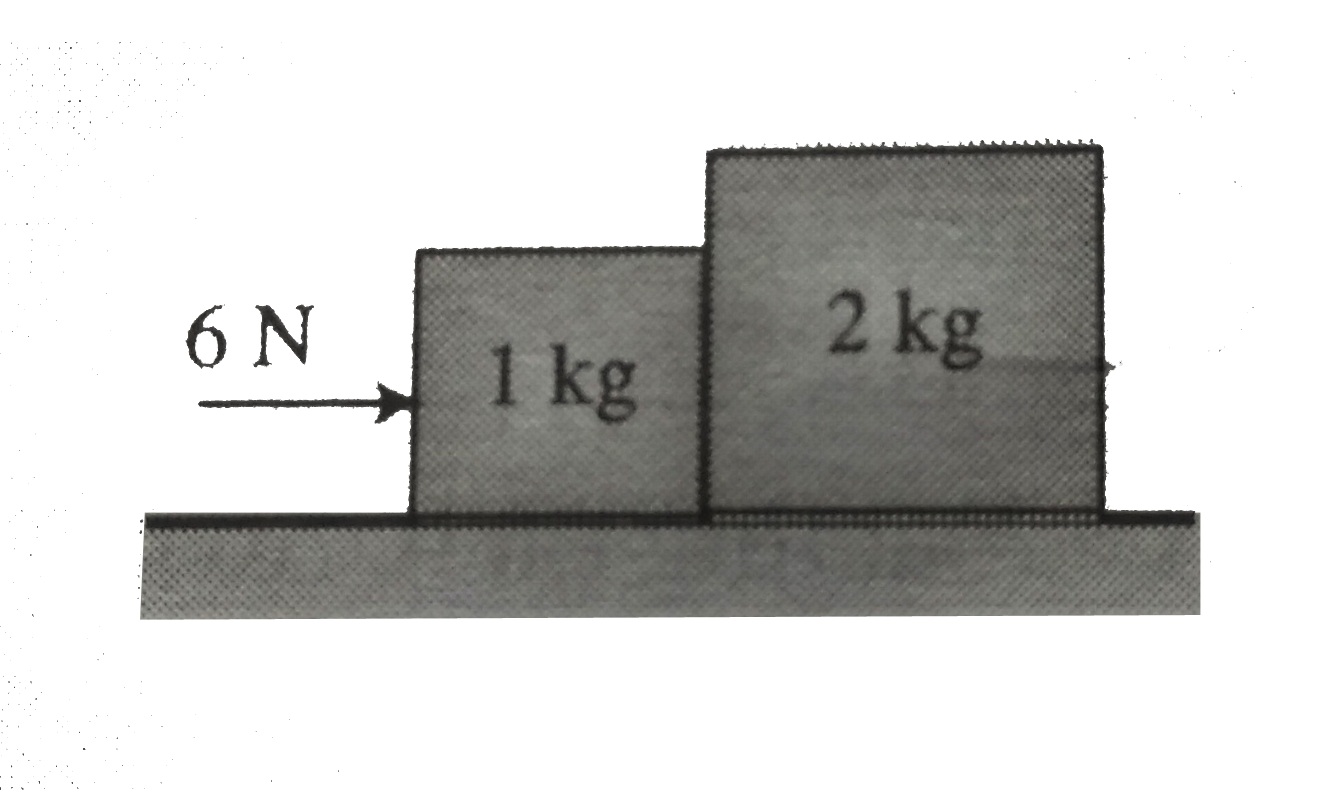
A4NB5NC10NDnoneThe figure shows a smooth fixed wedge on which a block of mass m is kept and released, then which of the following (s) are true.
(→a= acceleration of block and N is the contact force between the block and the wedge)
 ANcosθ=mgBN=mgcosθC→a=Nsinθˆim+(Ncosθ−mgm)ˆjD→a=gsinθcosθˆi−gsin2θˆj
ANcosθ=mgBN=mgcosθC→a=Nsinθˆim+(Ncosθ−mgm)ˆjD→a=gsinθcosθˆi−gsin2θˆj
Two blocks of masses 4kg and 6kg are kept on a rough horizontal surface as shown. If the acceleration of 6kg block is 5n, then n is :

View SolutionIn the system shown in the figure all surfaces are smooth, pulley and string are massless. The string between the two pulleys and between pulley and block of mass 5 m is parallel to the incline surface of the block of mass 4 m. The system is released from rest. Find the acceleration of the block of mass 4 m . [tan37∘=34]
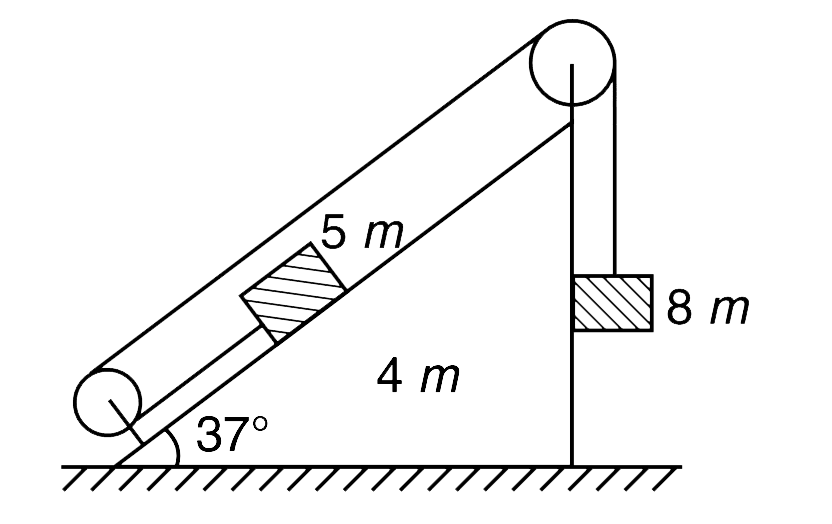
View SolutionA 1 kg block sIides down an inclined plane of mass 3.2kg having inclination 45∘. If the inclined plane is fixed and the 1kg block slides without friction, find the acceleration of the centre of mass of the system of the block and inclined plane.
View SolutionTwo block of masses 2kg and 4kg are released from rest over a smooth inclined place of inclination 30∘ as shown in figure what is the normal force between the two blocks?

View SolutionTwo blocks A and B of equal masses are released on two sides of a fixed wedge C as shown in figure. Find the acceleration of centre of mass of blocks A and B. Neglect friction.
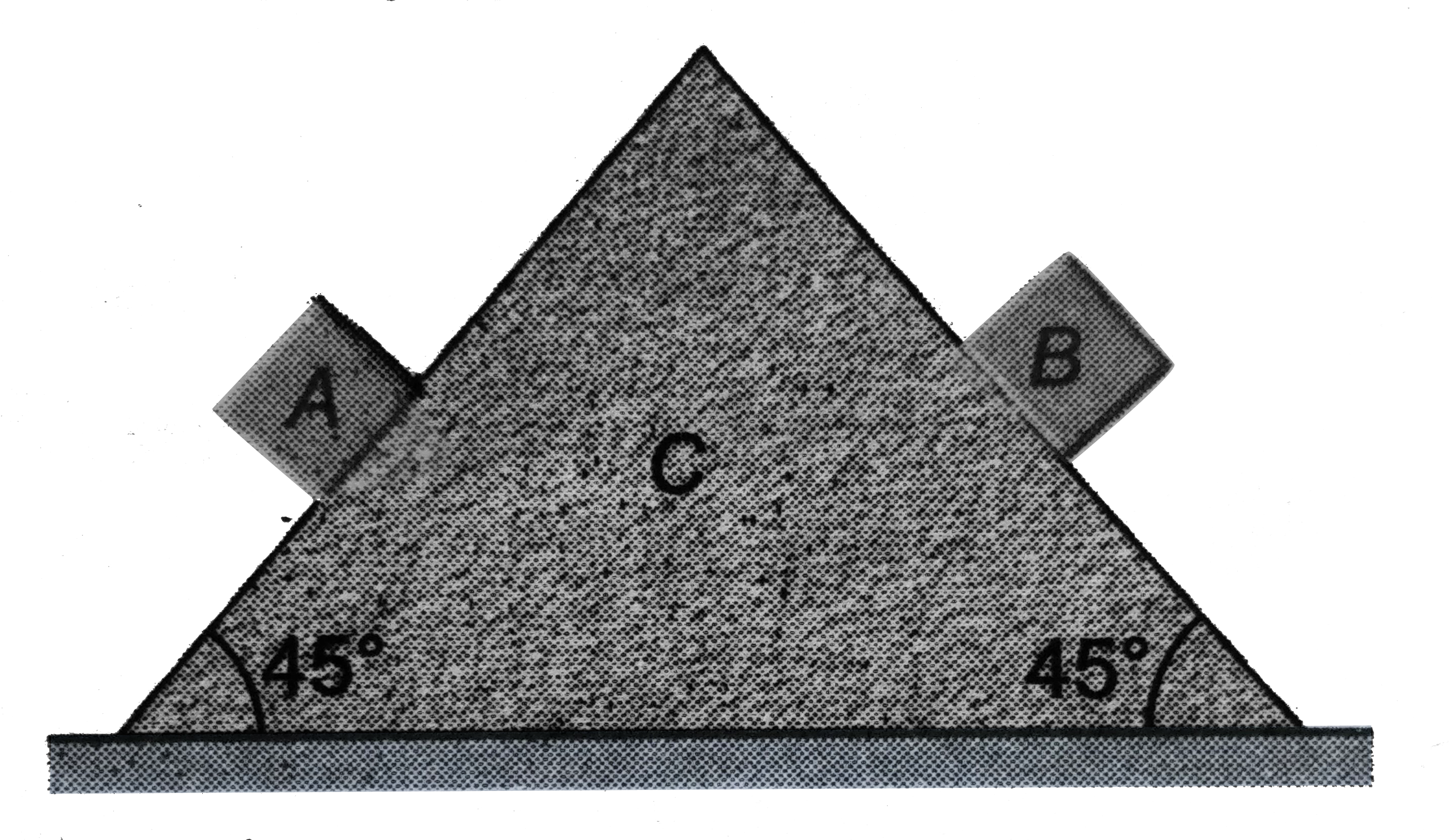
View Solution